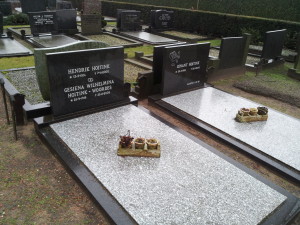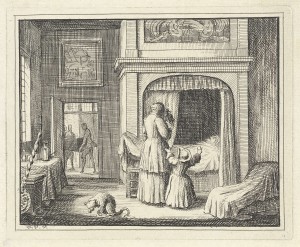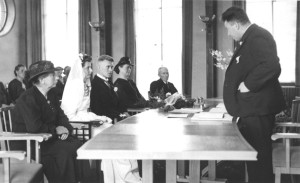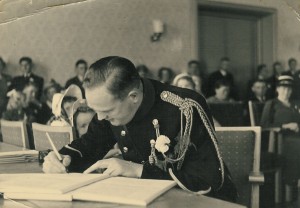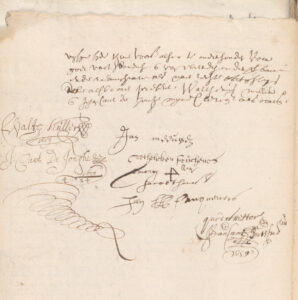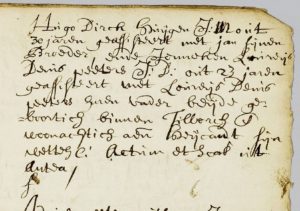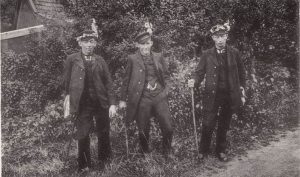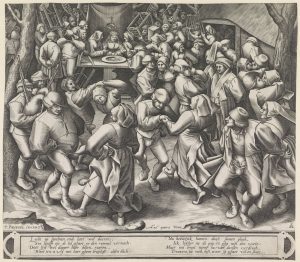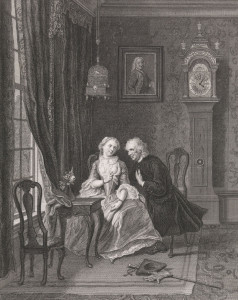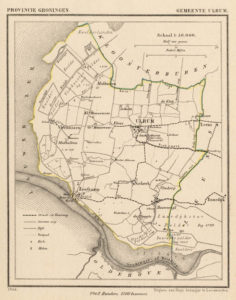In the Netherlands, vital records do not immediately become public but remain closed for a certain period: Birth records: 100 years Marriage records: 75 years Death records: 50 years. The records become public on 1 January of the year following the embargo period. As I described in a previous post, it may be possible to obtain copies of non-pubic records with permission of the person involved or with proof of their death. In this post, I will describe some alternative sources for … [Read more...]
Quick tip – Were the parents really deceased?
In marriage records, you may often find a note that the parents had died. Depending on the time and place, this was not necessarily the truth. Saying the parents were dead was an easy way to avoid having to prove parental permission. If it is a civil registration marriage record (after 1811 in most places), you may find proof of death in the marriage supplements. The law stipulated that a person under the age of 30 had to provide parental permission or proof of death of the parents, or even … [Read more...]
Dutch term – Tegenwoordig, tegenwoordigheid
Tegenwoordig means present. Tegenwoordigheid means presence. You may come across the term in official documents. For example, a civil registration marriage record may mention that the bride's parents were hierbij tegenwoordig [hereby present], and consented to the marriage. Or you may find a notarial record that was signed in the tegenwoordigheid of two witnesses. … [Read more...]
Level 2 Checklist – Vital Statistics
Last month I issued my Level-Up Challenge, challenging you to assess how complete your research is. Level 2 is vital statistics only. In this blog post, I will explain which sources I feel I need to have found or searched for in order to say I have reached level 2. For each vital event, I want to have found at least one of the sources indicated here so I know where and when a person was born, married, and died. Date and place of birth Birth record (civil registration) I want to find … [Read more...]
Quick tip – Was there a prenuptial agreeement?
In some cases, couples made a prenuptial agreement when they married. Often, this was the case when at least one of the spouses had assets to protect, or when one of the spouses was richer than the other. The typical arrangement was that if one of them died without children, that person would receive a sum of money while the survivor kept the rest. The sum reflected each spouse's financial situation at the start of the marriage. Another reason to make a prenuptial agreement is if one or both of … [Read more...]
Dutch term – J.M. and J.D.
Two abbreviations you may often find in older marriage records are J.M. and J.D. "J.M." stands for Jonge Man, literally: young man. "J.D." stands for Jonge Dochter, literally: young daughter. They refer to the marital status of the person, indicating they are single and this is their first marriage. The word jong/young has no relation to their age. Sometimes, you find J.G. [Jong gezel, approximately: young journeyman or companion] instead of J.M., but the meaning is the same: a … [Read more...]
Dutch term – Bruiloft
A bruiloft is a wedding. Different regions have different wedding traditions, and they also changed over time. The area of Twente in Overijssel, where I grew up, has some peculiar wedding traditions. Other regions have similar or slightly different traditions, but I thought I would share some that I experienced myself. Even in my generation (born in the 1970s), I knew a few girls who would start their trouseau as a teenager. They started asking for plates and linens from their twelfth … [Read more...]
Source – Publication of the banns
In the Netherlands, you have to go in "ondertrouw" before you get married. This means that the banns are read, giving everyone in the community a chance to object to the marriage. In the period before the introduction of the civil registration, church records are the most important source of vital information. Many churches recorded the banns rather than the marriage. They recorded when the couple registered the banns, and sometimes noted the marriage announcements on three different times, … [Read more...]
Dutch term – Huwelijkse voorwaarden
Huwelijkse voorwaarden (literally: marriage terms) is the Dutch term for prenuptial agreement. Historically, like today, most people did not have huwelijkse voorwaarden. Prenuptial agreements were often made by people who were well-to-do or who had children from a previous marriage to provide for. A prenuptial agreement identifies the spouses, sometimes accompanied by family members, and describes how the estate should be divided in case one of them dies. Usually, different scenarios are … [Read more...]
Ask Yvette: Untangling two same-named women
My distant cousin, Fred Geurkink, asked me the following question [edited for brevity]: My grandma Gigi, (Marion Peterson), wrote down in her recollections about my great great grandma Grietje Koning. Said she was born on 30 Aug 1834, married my gg grandpa Jan Pieters Stelma on 23 Jun 1856, etc etc. On Ancestry, I received "hints" about said Grietje Koning from other members, who also married Jan Pieters Stelma, but her birthday was different: July 29 1834. Could my grandma be wrong, or are … [Read more...]
